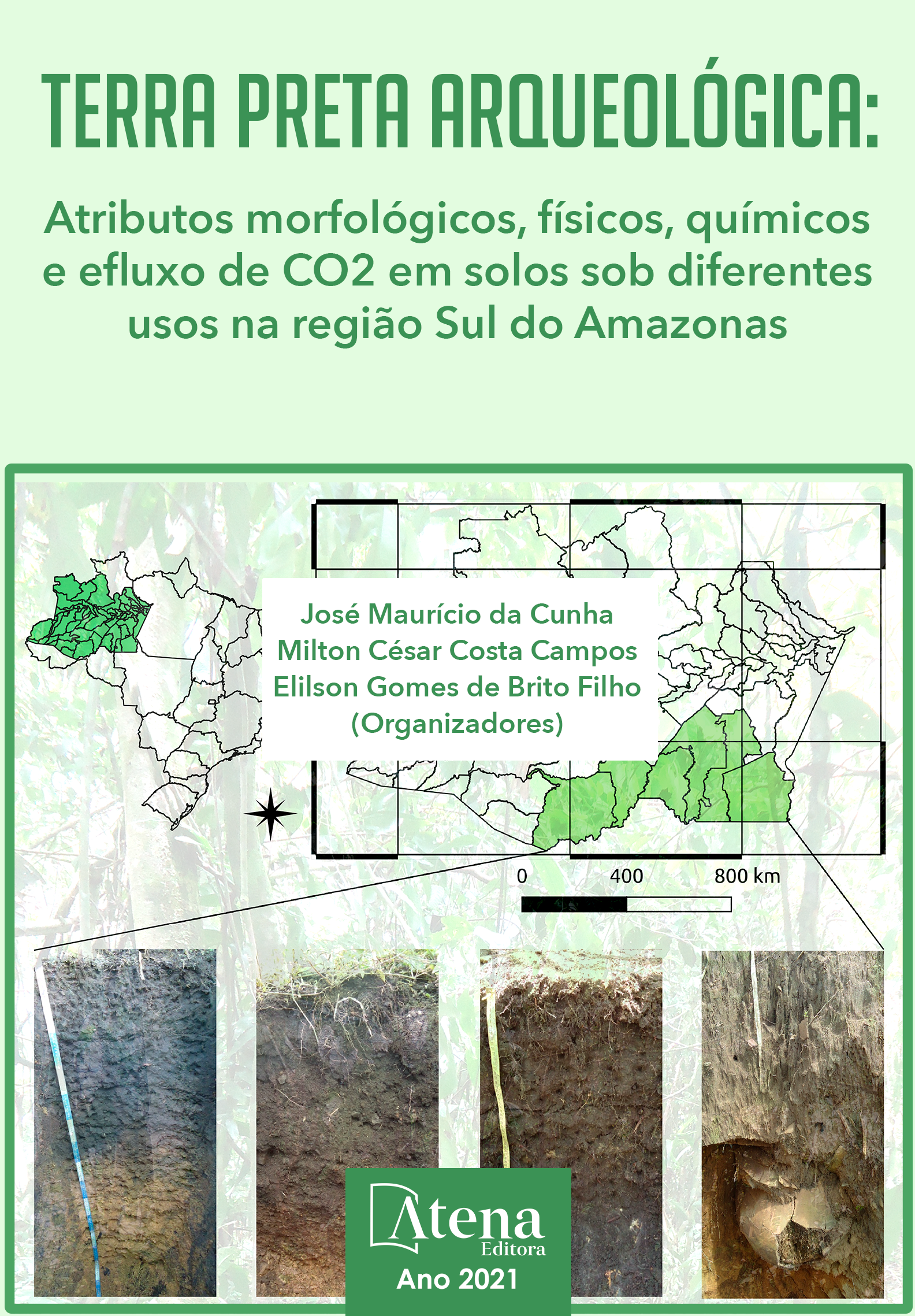
10. VARIABILIDADE ESPACIAL DA TEXTURA DO SOLO EM ÁREA DE TERRA PRETA ARQUEOLÓGICA SOB DIFERENTES USOS NA REGIÃO SUL DO AMAZONAS
O bioma amazônico possui uma vasta biodiversidade, com solos em sua maioria de baixa fertilidade, porém com algumas manchas denominadas de terras pretas arqueológicas (TPA), onde esses solos apresentam, alta fertilidade natural e potencial físico em relação aos solos adjacentes. O objetivo deste trabalho foi avaliar a variabilidade espacial da textura em áreas de terras pretas arqueológica sob diferentes usos na região sul do Amazonas. O estudo foi realizado no município de Apuí, sendo que na área de estudo, foi estabelecido um grid amostral de 88 por 64 m, e os solos foram amostrados nos pontos de cruzamento da malha, com intervalos regulares de 8 m, totalizando 88 pontos amostrais. Foram coletadas amostras de solos na profundidade de 0,0-0,5 m. A análise granulométrica foi realizada pelo método da pipeta. Os dados foram submetidos à estatística descritiva e geoestatística. A área sob manejo de pastagem apresentou maior variabilidade espacial se tratando de atributos granulométricos.
10. VARIABILIDADE ESPACIAL DA TEXTURA DO SOLO EM ÁREA DE TERRA PRETA ARQUEOLÓGICA SOB DIFERENTES USOS NA REGIÃO SUL DO AMAZONAS
-
DOI: 10.22533/at.ed.20021070710
-
Palavras-chave: Geoestatística, TPA, Granulometria.
-
Keywords: Geostatistics, ABE, granulometry.
-
Abstract:
The Amazonian biome has a vast biodiversity, with mostly low fertility soils, but with some clack soils called Archeological Dark Earth, where these soils present high natural fertility and physical potential in relation to the adjacent soils. The objective of this work was to evaluate the spatial variability of texture in areas of Archeological Dark Earth under different uses in the southern region of Amazonas. In the study area, a mesh measuring 88 x 64 m was established, so that the soils were sampled at the crossing points of the mesh, with regular intervals of 8 m, totaling a total of 88 sample points. Soil samples were collected at depth 0.0-0.5 m to the south of the state of Amazonas, respectively, in the city of Apuí to perform the physical analysis of texture by the pipette method, and then the data were submitted to descriptive statistics and geostatistics. Area under pasture management showed greater spatial variability when it comes to texture attributes granulometric.
-
Número de páginas: 12
- Elilson Gomes de Brito Filho
- Bruno Campos Mantovanelli
- Wildson Benedito Mendes Brito
- Julimar Fonseca da Silva
- Milton César Costa Campos
- José Maurício da Cunha


